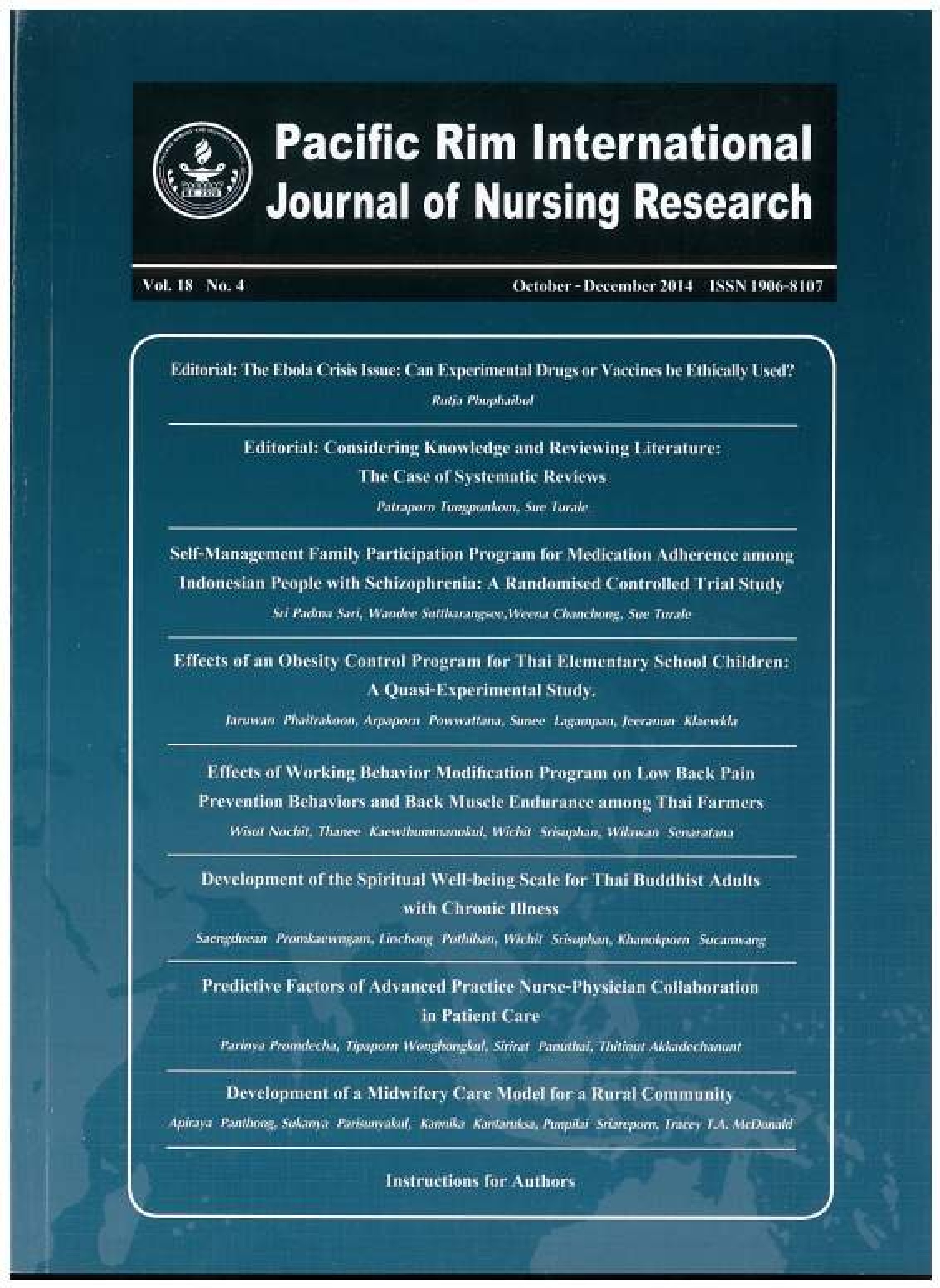Development of a Midwifery Care Model for a Rural Community
Keywords:
Community consultation, Midwifery care model, Mixed methods, Participatory action research, Rural midwifery careAbstract
The global challenge of midwifery today is to provide care that is relevant and appropriate for those needing midwifery services. Rural communities have particular care needs and in this paper a conceptual model of midwifery care appropriate for rural Thai communities was designed and tested. The aim was to develop a midwifery care model for a rural community in an area of Southern Thailand. This mixed methods participatory action research involved qualitative and quantitative analysis of data from nurse-midwives,village health volunteers and childbearing women. Findings reveal that participants regarded the overall quality of midwifery care as fairly good and identified changes needed to improve rural midwifery care: midwifery education for the care team; service linkages and access to specialist services; psychosocial support for women and family; skills and knowledge in prevention of maternal complications; volunteers’ participation and education; and specialist clinical support for nurse-midwives.The rural midwifery care model incorporates five components: well-connected teamwork; professional development benefits; continuity of care perspective; integrated care and collaboration; and benefits for women. The implications of this study are that a similar process could be undertaken in any rural setting in any society to ensure that the core values of the community and the central concerns of those who use it are addressed. The midwifery care model developed in the Thai context could be used as a guide for nurse-midwives to effectively enhance the quality of rural midwifery care in all rural and remote area contexts.
Downloads
Published
How to Cite
Issue
Section
License
Copyright: The Pacific Rim International Journal of Nursing Research, Thailand Nursing & Midwifery Council has exclusive rights to publish, reproduce and distribute the manuscript and all contents therein.







.png)


